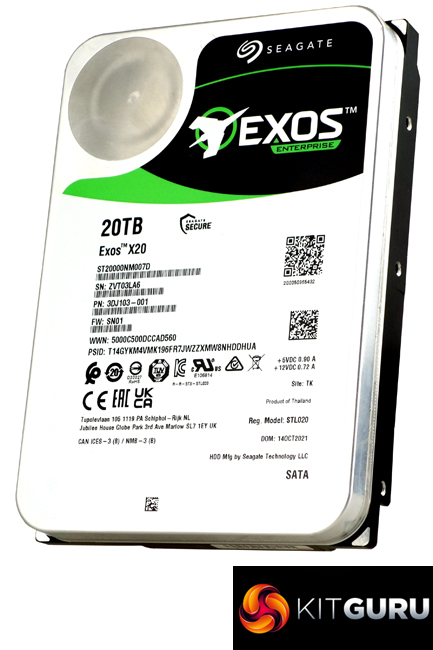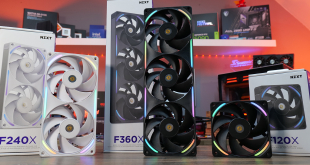The new flagship drive of Seagate's Exos drive family is the 20TB X20. Designed for use with hyperscale applications/cloud data centres, Seagate’s new drive delivers more capacity per rack while maintaining the same small footprint for a reduced overall total cost of ownership.
While it's great to have more capacity on offer for rack-based storage solutions, the real trick is to do while keeping power consumption and therefore operating costs as low as possible. The Exos range has a couple of Seagate’s technologies to help with this; PowerChoice (Idle power) and PowerBalance (power/performance).
PowerChoice is Seagate’s own implementation of the T10/09-054 and T13 Standard No T13/452-2008 and uses four step by step modes to enhance power savings while the drive is in idle periods longer than a second. Seagate claims that savings up to 54% can be made on drive power consumption in enterprise environments with PowerChoice technology.
Typically PowerChoice is enabled via a SATA Set Feature command (or via the SAS Mode Page for a SAS drive). This allows flexibility so that optimal idle times can be set for a particular storage application. Once the technology has been enabled it puts the drive into deeper and deeper idle power states the longer the drive is idle.
Seagate’s PowerBalance feature helps optimise the IOPS/Watt for even greater efficiency in environments with the focus on random read/write operations.
Seagate's Exos X20 uses ten 2TB platters (average areal density of 1,146 Gb/in² each) and 20 heads. It comes with 256MB of cache and has a spindle speed of 7,200rpm. Average latency is quoted at 4.16ms.
The X20 is officially rated as up to 285MB/s for transfer rates. We could confirm this figure with the default CrystalDiskMark Sequential test (QD32 T1) with result figures of 293MB/s for reads and 289MB/s for writes.
Currently, there are five versions of the Exos X20; two with a SATA 6Gb/s interface, the standard drive (ST20000NM007D) we are reviewing here, and a SED (Self-encrypting drive), the ST20000NM000D. The three other versions of the X20 use a 12Gb/s SAS interface, a standard model (ST20000NM002D), SED version (ST20000NM003D) and a SED-FIPS model (ST20000NM005D).
We found Seagate’s Exos X20 on broadbandbuyer.com for £406.06 (inc VAT) HERE.
Pros
- Huge capacity.
- Overall performance.
- Power saving features.
- 5-year warranty.
Cons
- Not cheap.
KitGuru says: Seagate’s latest flagship hard drive for the enterprise sector has been designed to make the most of rack space in enterprise environments thanks to its huge 20TB capacity. It also offers IT managers flexibility with interface and encryption options.
 KitGuru KitGuru.net – Tech News | Hardware News | Hardware Reviews | IOS | Mobile | Gaming | Graphics Cards
KitGuru KitGuru.net – Tech News | Hardware News | Hardware Reviews | IOS | Mobile | Gaming | Graphics Cards




